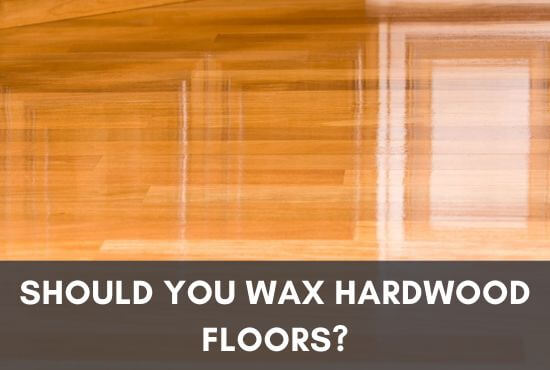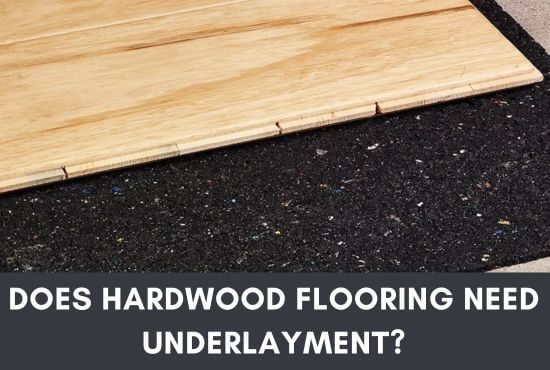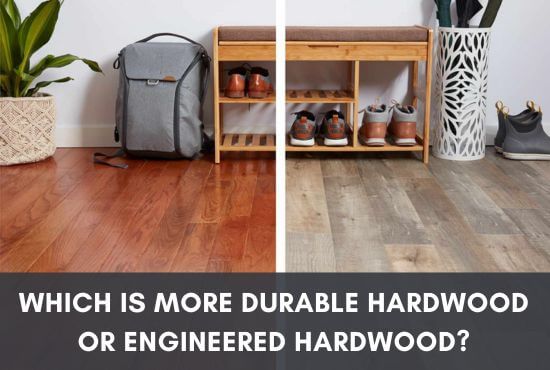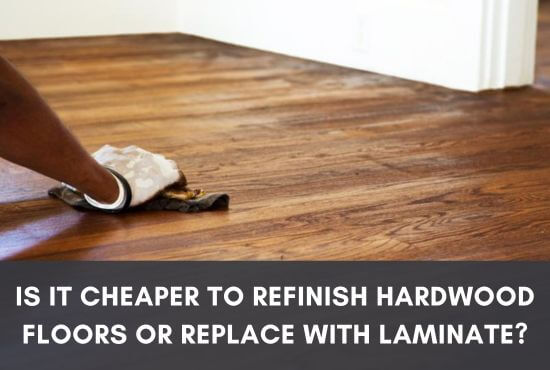Softwood and hardwood floors are the most common types of flooring choices in homes and commercial spaces. Each offers unique benefits and brings a distinct character to any room.
Softwood floors are usually lighter in color and have a less tight grain compared to most hardwood floors. They can get damaged more easily from things like pet nails, high heels, and scratches. This makes them not the best choice for busy households with lots of activity.
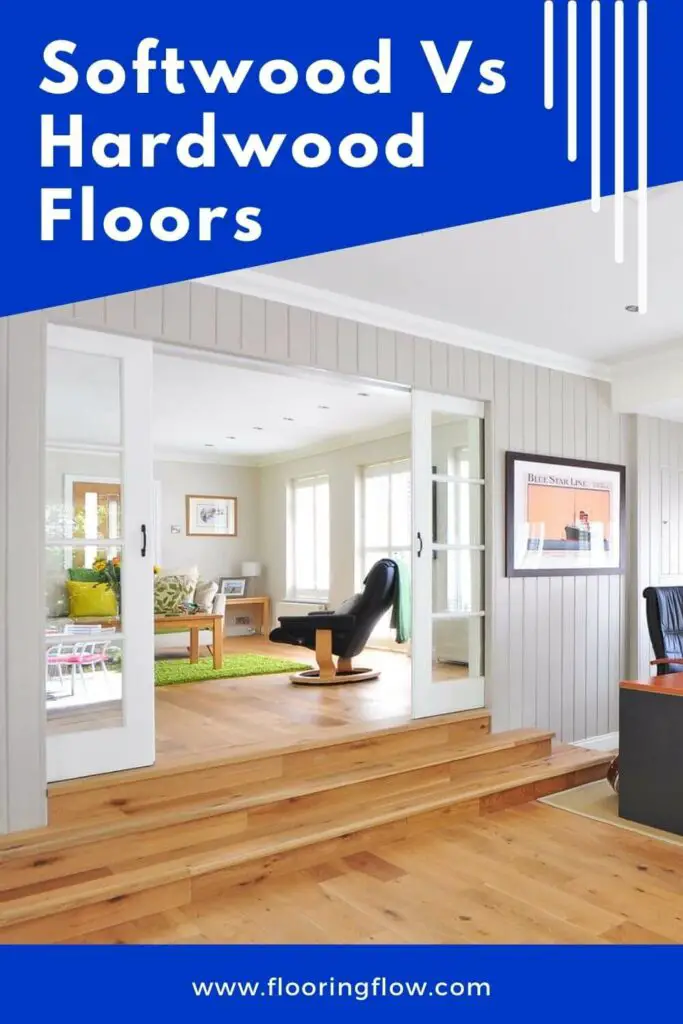
As someone who has firsthand experience with the advantages and disadvantages of each type, I will guide you through making a wise decision for your own space. Stay tuned for an honest advice to help you choose the flooring that best suits your lifestyle and needs.
Table of Contents
- 1 Hardwood Flooring Overview
- 2 Softwood Flooring Overview
- 3 Difference Between Softwood And Hardwood
- 3.1 Hardwood Floors Are More Durable Than Softwood
- 3.2 Softwood Floors Are More Likely To Show Dents And Scratches Than Hardwood
- 3.3 Hardwood Floors Offer a Wide Range of Grains and Textures Than Softwood
- 3.4 Softwood Floors Tend To Have Lighter Colors And Patterns Than Hardwood
- 3.5 Both Hardwood And Softwood Floors Need Regular Maintenance And Cleaning
- 3.6 Softwood Floors Are More Likely To Be Refinished Earlier Than Hardwood
- 3.7 Softwood Floors Are More Budget-friendly Than Hardwood Floors
- 4 Softwood Vs Hardwood Floors: Which One To Choose?
- 5 Final Thoughts
Hardwood Flooring Overview

Despite its name, hardwood isn’t necessarily always hard. The term “hardwood” actually refers to the category of trees from which the wood is sourced, namely angiosperms or flowering plants.
These types of trees typically grow more slowly, which often leads to a denser wood structure. Common examples of hardwood include species like oak, maple, and walnut.
Hardwood Types
Maple
Mostly found in Eastern USA and Canada, maple wood has a creamy white to light reddish-brown hue (1). It features a closed grain with medium figuring and a uniform texture, and occasionally displays fine grain patterns. Maple flooring is a popular choice for residential projects, especially high-end renovations.
Get to know more about Maple hardwood floors.
Birch
Birch wood varies in color from light yellow to a dark brownish-red. Softer than red oak, it remains a robust wood. However, its popularity for flooring has declined over time.
Explore pros and cons of Birch hardwood flooring.
Beech
Beech wood, now less commonly used for flooring, is suitable for all domestic projects. It boasts a reddish-brown shade with a very consistent grain, offering durability and excellent shock resistance.
Oak
White oak presents a brown color, sometimes with a greyish tint. Its grain is similar to red oak but includes more burls and swirls.
White oak is harder and more durable than red oak and offers great resistance to insect and fungal attacks due to its high tannin content.
Find out: White Oak And Red Oak Hardwood Flooring Differences
Hardwood Flooring Pros
- Highly durable and long-lasting.
- Resistant to wear and tear, ideal for high-traffic areas.
- Offers a wide range of grains, textures, and colors for diverse design options.
- Maintains appearance over time, less prone to dents and scratches.
- Higher resistance to insect and fungal attacks.
Hardwood Flooring Cons
- Generally more expensive than softwood.
- Requires regular maintenance to retain appearance.
- Heavier, which may impact installation and transportation.
Softwood Flooring Overview

Softwood is derived from gymnosperms, commonly evergreen or coniferous trees (2). These species tend to grow more rapidly, resulting in wood that is lighter and less dense compared to hardwoods. Notable examples of softwood are pine, cedar, and fir.
Softwood Types
Pine
Pine wood comes with a yellowish-brown hue with numerous swirls and knots. It possesses a natural resistance to insects and has a hardness comparable to red oak. Pine trees are known for their rapid growth rate.
Don’t Miss: Yellow Pine And White Pine Comparison
Fir
Fir wood has a yellowish-tan appearance. It is significantly softer than red oak, making it prone to denting. While commonly used in flooring, fir is versatile and can also be utilized for wall paneling and furniture.
Softwood Flooring Pros
- More budget-friendly, lower cost compared to hardwood.
- Lighter colors and subtle patterns for a bright, airy feel.
- Faster and easier to work with during installation.
- Suitable for a minimalist aesthetic and less frequented areas.
Softwood Flooring Cons
- Less durable, prone to dents, scratches, and wear.
- Often requires earlier and more frequent refinishing.
- Not ideal for high-traffic areas or under heavy furniture.
- Limited variety in grains and textures compared to hardwood.
Difference Between Softwood And Hardwood
Hardwood Floors Are More Durable Than Softwood
Hardwood floors, made from trees like oak and maple, are known for their durability. They can withstand a lot of wear and tear, making them a great choice for high-traffic areas in homes or commercial spaces. Their tough nature means they last longer and don’t damage easily, compared to other flooring types.
In contrast, softwood floors from trees like pine and cedar, while charming, are less durable. They’re prone to dents and scratches, and may not be ideal for high-traffic areas or under heavy furniture.
This clear difference in durability makes hardwood a more long-lasting choice, though softwood can still be suitable for less frequented areas.
Softwood Floors Are More Likely To Show Dents And Scratches Than Hardwood
Softwood floors, crafted from trees like pine and cedar, are more prone to dents and scratches. Since the wood is softer, furniture, pets, and high heels can leave more marks on softwood than on hardwood.
Hardwood, being tougher, better withstands such impacts, maintaining its appearance over time. This makes hardwood a preferable option for areas that see a lot of activity, whereas softwood might be better for rooms with less foot traffic.
Also Read: Parquet Versus Hardwood Flooring: The Detailed Comparison
Hardwood Floors Offer a Wide Range of Grains and Textures Than Softwood
Hardwood floors offer a vast array of grains and textures, each species contributing its unique pattern and color.
This diversity allows for various design choices, from rustic to modern. Softwood floors, while having a more uniform appearance with lighter colors and subtler patterns, can lend a space a bright and airy feel. However, they don’t offer the same depth and richness in appearance as hardwoods do.
Softwood Floors Tend To Have Lighter Colors And Patterns Than Hardwood
Softwood floors usually feature lighter colors and more subtle patterns. The natural color of softwoods is generally softer and less intense than that of hardwoods.
This can give a room a brighter, more airy feel, but might not offer the same richness and depth as hardwood floors.
Softwood can create a more subdued, minimalist aesthetic, while hardwood offers deeper, richer tones and a wider range of patterns.
This makes hardwood a versatile choice for many design schemes, whereas softwood is often selected for its simplicity and light appearance.
Both Hardwood And Softwood Floors Need Regular Maintenance And Cleaning
Regular maintenance is key for both hardwood and softwood floors to keep them looking their best. This includes sweeping or vacuuming to remove dirt and grit, and mopping with a damp mop.
Avoiding excess water and harsh cleaners is crucial to prevent damage.
Softwood Floors Are More Likely To Be Refinished Earlier Than Hardwood
Softwood floors, being more prone to wear and damage, often require earlier and more frequent refinishing. This process, which involves sanding and resealing, can be more of a regular necessity for softwood.
Hardwood floors, in contrast, due to their durability, can go longer periods before needing such treatment, making them a more convenient long-term choice.
Two Most Popular Flooring Options: Cork Versus Hardwood Flooring
Softwood Floors Are More Budget-friendly Than Hardwood Floors
If you’re looking for a more affordable flooring option, softwood floors are generally less expensive costing around $2 to $4 per square foot, compared to hardwood floors, which range from $8 to $15 per square foot.
This price difference is due to the greater availability and ease of processing softwoods. While they may not offer the same durability and variety as hardwoods, softwood floors can be an economical choice for those looking to save on flooring costs.
Hardwood, though initially more expensive, can be a cost-effective investment in the long run due to its durability and timeless appeal.
Softwood Vs Hardwood Floors: Which One To Choose?
If durability and a wide variety of textures and colors are important, go for hardwood. For a more budget-friendly option with a lighter, simpler aesthetic, softwood is a good choice.
Remember, hardwood is more long-lasting and suitable for high-traffic areas, while softwood is softer and may need more frequent maintenance.
Related: Shaw Vs Bruce Hardwood Floors: Which Brand Wins?
Final Thoughts
In considering softwood vs hardwood floors, it boils down to your needs and budget. Choose hardwood for durability and style diversity, or opt for softwood for a cost-effective, lighter look.
Each brings unique character to your space, balancing functionality with aesthetic appeal.

As a co-creator of FlooringFlow.com, Emma Sophia comes on board to answer all your questions related to any flooring problems. Together with John Henry, she’s gained extensive experience in fixing many flooring problems in their own house as well as in friends and family’s. Now, she wants to share her knowledge that she gained during floor remodeling, restoring, and DIY projects.

